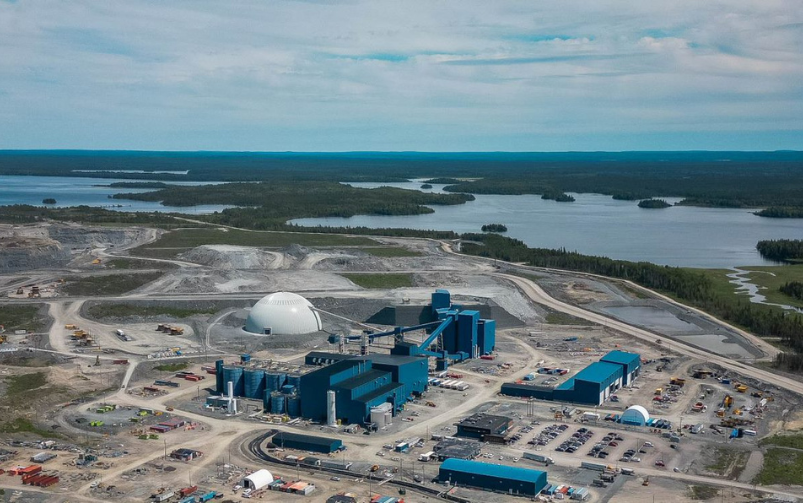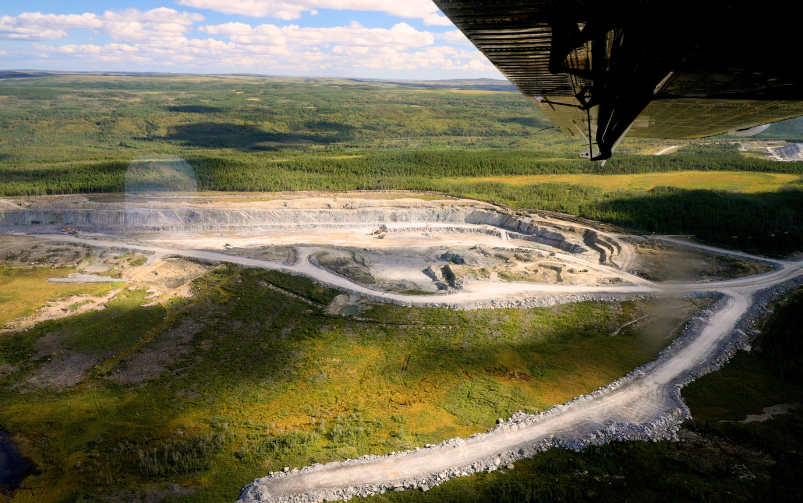Canada updated the critical minerals list with silicon metal, which is required for semiconductors and computer chips. Courtesy of Luciteria Science.
Natural Resources Canada (NRCan) updated the country’s critical minerals list in June to include high-purity iron, phosphorous and silicon metal.
High-purity iron—which contains roughly 60 per cent iron content or higher—is critical to the production of low-emission steel. Phosphorous is a key component of fertilizers and is also part of lithium iron phosphate (LFP) batteries, which have skyrocketed in popularity in the past five years, and as of 2023, supplied more than 40 per cent of EV demand globally, much of it coming from China, according to the International Energy Agency’s (IEA) Global EV Outlook 2024 report. Silicon metal is necessary to make chips and semiconductors for electronic devices.
The additions indicate that the federal government is aiming to position Canada as a key player in other parts of critical minerals supply chains, rather than just exploration and extraction, said Jeff Killeen, director of policy and programs at the Prospectors and Developers Association of Canada (PDAC), adding that it is something that PDAC had advocated for.
“One thing we wanted to see the government consider was processing, not just extraction. We had suggested not necessarily establishing a critical processing list, but considering processing in the things that we need for what the government’s talking about—whether it’s electrification or battery electric vehicles,” Killeen said in an interview with CIM Magazine. “We want to have the ability to be price-makers where we can be, rather than just price-takers.”
Phosphorous
John Passalacqua, chief executive officer of First Phosphate Corp., said in an interview with CIM Magazine that the inclusion of phosphorous was something that the company had expected, given the growing market dominance of LFP batteries. Ontario, Quebec and the European Union and South Korea have also added phosphorous to their critical minerals lists, and the United States is expected to do so as well.
Phosphate is found in two types of deposits: sedimentary reserves (which make up 95 per cent of all deposits) and igneous rock (the other five per cent). Phosphate that is used in fertilizer comes from sedimentary deposits and undergoes a purification cycle to get to the merchant grade acid necessary for fertilizer and animal feed. The rock in the much rarer igneous deposits can be refined into battery grade purified phosphoric acid (PPA). Just 10 per cent of sedimentary deposits can be turned into PPA. South Africa, Brazil, Finland, Russia and Canada have the largest igneous deposits.
First Phosphate is advancing phosphate projects in Quebec’s Saguenay–Lac-St-Jean region, and released a preliminary economic assessment for its Lac à l’Orignal property in July 2023. Passalacqua said the company has ambitions to also develop purification facilities. The company received a mining research and innovation grant of $315,236 from Quebec’s mining and forestry ministry in March.
China, which has already achieved mass-adoption of electric vehicles, shifted to LFP batteries, which Passalacqua said is due to their low-cost (NMC batteries were about 25 per cent more expensive than their LFP equivalents in 2023, according to the IEA), fire safety and longer life, as well as the availability of the materials.
“It’s important to realize that LFP was invented in North America, but taken over in China,” he said. “The west is terribly behind; we haven’t even started producing batteries. All of our so-called gigafactories that are moving forward with nickel manganese cobalt aren’t even built yet, and already the technology is being phased out.”
High-purity iron
Quebec-based Champion Iron cheered the inclusion of high-purity iron in a June 10 press release following the announcement. Noémie Prégent-Charlebois, senior manager, communications and government affairs at Champion Iron, told CIM Magazine that news of the inclusion indicated that Canada “wants to become a global sustainable leader in the green-steel supply chain. We think it will stimulate major investments here by attracting strategic partners to develop the high-purity iron industry.” Quebec and Newfoundland have also included high-purity iron on their critical minerals lists.
High-purity iron ore is used in direct reduction, a less carbon-intensive steelmaking process that involves using a reducing agent like natural gas or hydrogen to remove oxygen from the ore. The direct-reduced iron is then processed into liquid hot metal in an electric-arc furnace. The process eliminates the need for metallurgical coal, the reducing agent in traditional blast furnaces. According to the World Steel Association, by 2021, EAF output accounted for 30 per cent of global steel production. Canadian steel producers ArcelorMittal Dofasco and Algoma Steel have also begun preparations to transition to EAF steelmaking.
In April 2023, Champion green-lit a $52-million increase in investment into a direct reduction pellet feed project at its Bloom Lake iron ore complex in Quebec. Prégent-Charlebois said the project, which is expected to upgrade the Bloom Lake Phase 2 plant’s production of iron ore concentrate from 66.2 per cent to 69 per cent, will produce some of the purest iron in the world.
The additions—which bring the list to a total of 34 critical minerals—were the result of consultations with provincial and territorial governments, industry, Indigenous groups and other federal government departments, NRCan said in a June 10 press release.
Canadian critical minerals explorers and producers can be eligible for the 30 per cent Critical Minerals Exploration Tax Credit (CMETC). Passalacqua said gaining access to the tax credit is particularly helpful in the wake of the upcoming changes to the capital gains inclusion rate, which will impact investments into mineral explorers.
However, Killeen noted that there is a slight wrinkle: the legislation that introduced the CMETC was written to stipulate specific minerals, so the three additions will not be immediately eligible.
Companies can also be eligible for the Clean Technology Manufacturing Tax Credit for six primary critical minerals, in addition to support from the $1.5 billion critical minerals infrastructure fund that is meant to advance infrastructure necessary to connect critical minerals to downstream markets. It also puts companies on the radar of trade partners such as the United States, European Union and Japan.



